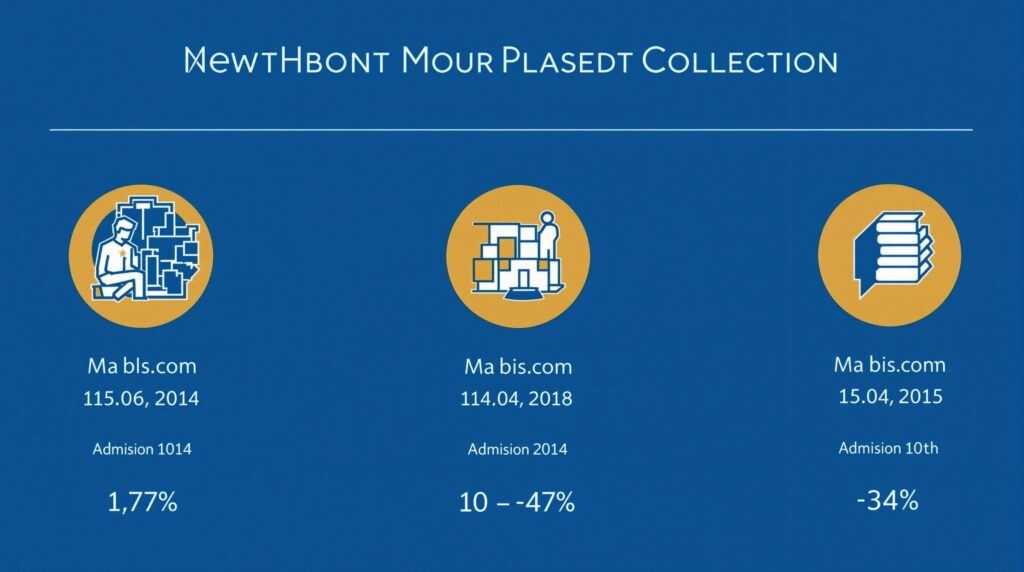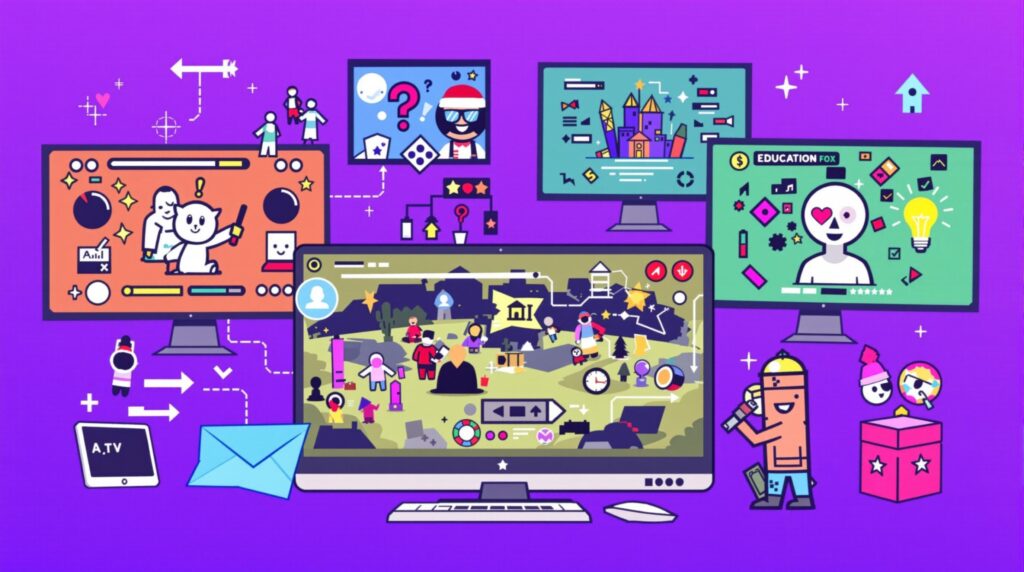Securing funds for educational projects requires a compelling proposal that speaks directly to funders’ priorities. In 2025, educational grants are increasingly competitive, with specific focus areas like digital literacy, STEM education, and equity-based initiatives receiving the lion’s share of available funding. A well-crafted sample proposal letter for funding can significantly increase your chances of success by clearly communicating your project’s value and alignment with current funding priorities.
Key Takeaways
- Federal education funding has reached $18.6 billion for Title I programs with priority areas including high-dosage tutoring and STEM equipment
- Successful proposals include data-driven problem statements that directly connect to funders’ priorities
- Budget specificity is critical – avoid vague language and detail exact costs for all project components
- Demonstrating post-grant sustainability plans significantly increases approval chances
- Using current research citations (2023-2024) strengthens your proposal’s credibility
Understanding the 2025 Educational Grant Landscape
Before writing your proposal, it’s essential to understand where funding is flowing in 2025. Federal education funding has reached unprecedented levels, with $18.6 billion allocated for Title I programs and $8 billion for student engagement initiatives. The Department of Education is focusing on specific priority areas that address current educational challenges.
High-dosage tutoring programs have secured $1.2 billion in funding, while STEM equipment for Title I schools has been allocated $4.3 billion. There’s also significant interest in teacher training for AI integration, with 23% of approved 2024 proposals focusing on this area. Programs addressing digital literacy and equity in high-poverty communities (>35% poverty rates) are particularly successful.
When crafting your proposal, I recommend referring to the Department of Education’s $910 million Educational Opportunity Grant program, especially when addressing systemic barriers to education. Successful proposals in 2024 typically requested between $25,000-$50,000, with 72% incorporating specific measurable outcomes that funders could easily evaluate.

Crafting a Strategic Opening Paragraph
Your proposal’s opening paragraph must immediately grab attention and establish relevance. Include data-driven hooks that highlight the specific problem your project addresses. For example: “In our district, 42% of students lack home internet access, creating a 2.3-year achievement gap in digital literacy.”
Show direct alignment with the funder’s priorities using language that mirrors their guidelines. Phrases like “aligned with your 2025 priority of equitable STEM access” demonstrate that you’ve done your research and understand what the funder values. The Little Lamb Literacy Center secured $25,000 by opening with specific metrics: “Our Digital Literacy Lamb Academy targets 8 components missing for 68% of local youth.”
Always establish both the educational need and your qualification to address it in this opening section. This creates immediate credibility and gives reviewers a clear understanding of your proposal’s purpose.
Developing a Compelling Problem Statement
A strong problem statement uses localized statistics to illustrate the specific challenges your project will address. Include data points such as: “35% of our students score below basic on state digital literacy assessments.” Then compare these local challenges to national benchmarks: “This exceeds the 27% national average for Title I schools.”
Visual aids can dramatically strengthen your case. Consider including a table that shows current metrics alongside projected improvements after funding. For example:
- Digital literacy pass rates: Current 58% → 12-Month Goal 75%
- College-ready tech skills: Current 41% → 12-Month Goal 65%
- Student engagement metrics: Current 63% → 12-Month Goal 82%
Avoid generic problem statements that could apply to any school district. Instead, use district-specific data points that connect directly to the funder’s stated priorities. Always cite the most recent research studies (2023-2024) to support your problem identification, as the Department of Education prioritizes current citations.
Creating a Solution-Oriented Project Description
Your project description must clearly outline how funding will be used and the specific outcomes it will produce. Break down budget allocations precisely, for example: “40% for equipment (15 AI-powered learning stations @ $2,100/unit), 30% for teacher training, 20% for assessment tools.”
Name specific technology tools you’ll implement, such as Kurzweil 3000 for literacy support or Labster virtual labs for STEM programs. This level of detail shows that you’ve thoroughly researched effective solutions. Connect every budget item to a specific outcome: “Each $1,000 invested in teacher training yields 11% higher program retention.”
Include a detailed implementation timeline with clear milestones that demonstrate thoughtful planning. Specify exactly how many students and teachers will benefit and what measurable improvements will result from the funding. Outline assessment methods that will track impact throughout the grant period to reassure funders that their investment will be properly evaluated.
Demonstrating Post-Grant Sustainability
Funders want to know their investment will have lasting impact beyond the initial grant period. Include language that addresses sustainability: “After the 18-month grant period, district matching funds will sustain 70% of program costs.” This assures reviewers that your project won’t simply disappear when funding ends.
Outline partnerships with local businesses or organizations that will continue supporting the initiative. For example: “Our partnership with TechFirst Industries will provide ongoing technical support and equipment updates at reduced costs.” Explain how professional development components will create lasting capacity within your organization.
Use ROI projections to demonstrate long-term value: “Our model predicts 200+ students gaining industry certifications within 24 months, increasing local workforce readiness by 18%.” Discuss how the program will be integrated into existing school structures to ensure continuation. You might also reference proven sustainability strategies that similar programs have achieved in comparable districts.
Leveraging Technology and Data
Modern grant proposals benefit from incorporating technology both in project implementation and in the proposal itself. Consider using AI-driven customization tools like Docupilot to adapt proposals to different funders’ guidelines, saving time while increasing relevance.
Reference successful technology integration examples, such as how the Read to Succeed! program increased funding by 40% using personalized data visualizations. Incorporate predictive analytics to show expected outcomes based on similar interventions elsewhere.
Discuss how you’ll use technology to track and report grant outcomes, demonstrating accountability and transparency. Explain how digital tools will help scale impact beyond the initial implementation. Don’t forget to include provisions for data security and ethical use of student information, as these concerns are increasingly important to funders.
Avoiding Common Pitfalls
Many promising proposals fail due to avoidable mistakes. Don’t use vague budget lines like “technology upgrades” – instead specify exact items such as “Promethean panels at $3,499/unit.” Be sure to include all required documentation – 63% of 2024 rejections missed Letters of Support from school boards.
Use only current research (2023-2024 studies); the Department of Education prioritizes citations from its 2025 Digital Equity Act. Avoid generic language that could apply to any school – specificity demonstrates thoughtful planning. Don’t underestimate administrative costs or overlook sustainability planning in your budget.
Ensure perfect alignment between your stated problem, proposed solution, and requested budget. Misalignment is a common reason for proposal rejection and can undermine otherwise strong applications.
Real-World Examples and Templates
Looking at successful examples can provide valuable insights for your own proposal. The Little Lamb Literacy Center’s successful $25,000 proposal opened with specific metrics and clearly aligned with funder priorities. Their proposal included before-and-after examples showing how weak sections were strengthened during the revision process.
When adapting templates, consider using different language for various funding types:
- For technology grants: “This initiative will equip 250 students with industry-standard digital tools, closing the 45% technology access gap in our Title I school.”
- For professional development: “Our training model will certify 18 teachers in evidence-based literacy instruction, impacting 432 students annually.”
- For curriculum development: “The proposed curriculum aligns with 2025 state standards while addressing the 38% achievement gap in mathematical reasoning.”
These templates should be adapted to your specific context, whether you’re in a rural, urban, or suburban setting, and adjusted for varying poverty levels. Check top educational foundations for specific requirements that might influence your proposal format.
Sources
Indeed – How to write cover letter for grant proposal
PrintFriendly – Sample grant proposal education funding
Grant Writing Academy – Sample letter of interest for grant application
Creative Educator – Writing an effective educational grant
EdQuip – Grant writing for educational equipment funding



